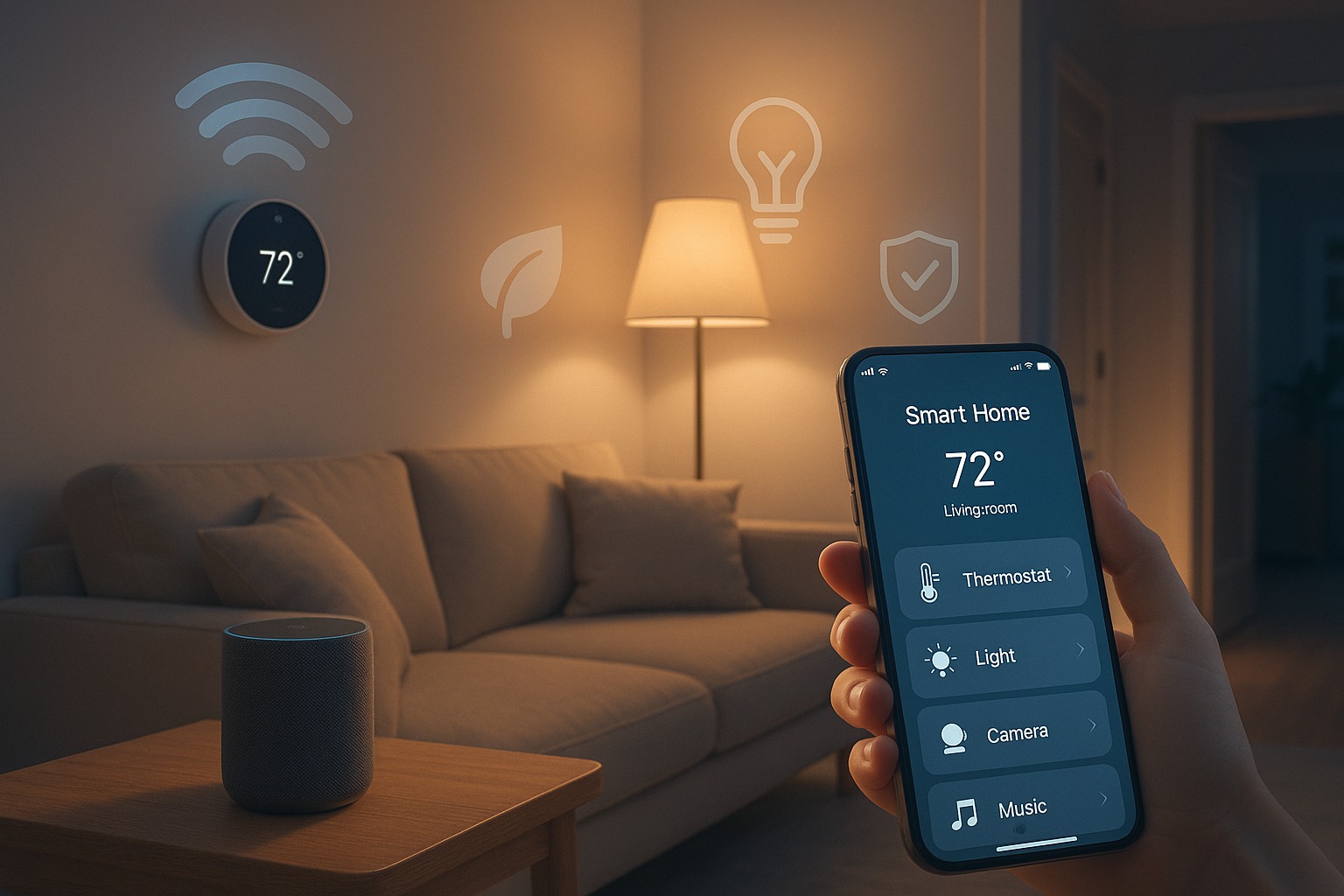Smart home automation offers numerous benefits including enhanced security, energy efficiency, remote access, and personalized comfort. By integrating smart devices like thermostats, lights, and cameras, homeowners can enjoy greater convenience, reduce utility bills, and improve home value—making automated living a smart and sustainable lifestyle choice.
In today’s connected world, smart home automation is transforming how we live—bringing together technology, convenience, and efficiency into one seamless experience. From smart thermostats that reduce energy usage to security systems that offer 24/7 remote monitoring, automated homes are becoming the new standard. In this guide, we’ll explore the top benefits of smart home automation and why upgrading to a connected home could be one of the smartest decisions you make.
What Is Smart Home Automation?
Smart home automation refers to the use of internet-connected devices to monitor, manage, and control household systems—like lighting, heating, security, and appliances—from a smartphone, voice assistant, or central hub. It’s what turns an ordinary home into a connected, intelligent environment that adapts to your needs.
How automation differs from remote control
Imagine walking into your home after a long day and the lights turn on automatically, your favorite playlist starts playing, and the thermostat has already adjusted to the perfect temperature. That’s the magic of smart home automation.
At its core, smart home automation is the integration of smart devices that can be programmed or triggered to operate without your direct input. Unlike simple remote controls, automation means your home can act on its own based on your habits, preferences, or even external conditions—like the weather or time of day.
Some common smart home devices include:
- Smart thermostats (like Nest or Ecobee) that learn your schedule and help save energy
- Smart lights that turn off when you leave a room
- Smart locks and security cameras for enhanced safety
- Voice assistants like Alexa or Google Home that control everything with a simple command
These devices communicate through wireless protocols like Wi-Fi, Zigbee, or Z-Wave, creating a network of connected systems that make your home not just smarter—but also more efficient and secure.
Whether you’re looking to save energy, boost security, or simply add convenience, smart home automation brings the future of living into your everyday life.
1. Increased Home Security
One of the biggest reasons people turn to smart home automation is to boost their home security—and it’s easy to see why. With real-time alerts, remote access, and intelligent monitoring, today’s smart security systems offer peace of mind whether you’re at home or away.
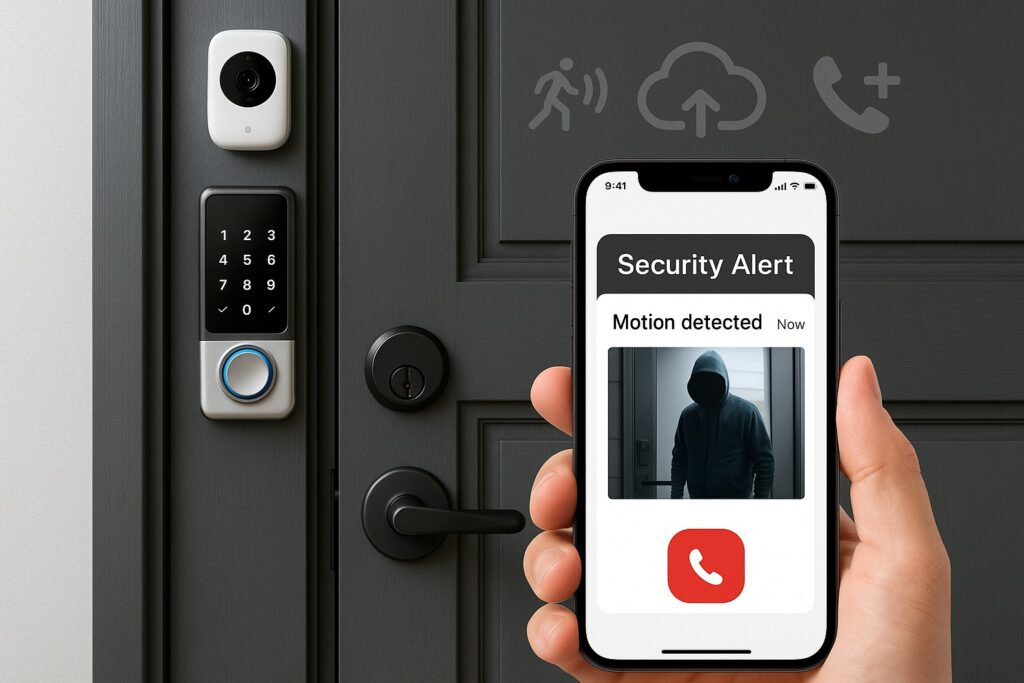
Integration and Monitoring
Gone are the days of relying solely on a basic deadbolt or outdated alarm system. With smart home security, you can see who’s at your door, lock it remotely, and even get notified if someone opens a window—no matter where you are.
Smart security cameras with motion detection and night vision can alert you to unusual activity instantly. Paired with smart door sensors and window detectors, you’ll always know when something’s amiss. You can even integrate these with video doorbells, like Ring or Nest Hello, to watch over deliveries or visitors in real-time.
Smart locks are another game-changer. You can grant access to family, friends, or even Airbnb guests without handing over a physical key. And if you forget to lock the door, no problem—you can do it right from your smartphone.
These systems also connect with home automation apps to send real-time alerts or trigger automated responses—like turning on outdoor lights when motion is detected. Some setups even link to emergency services, so help is on the way faster if something goes wrong.
With a smart home security system, your home becomes not only more secure but also more intelligent in how it protects you.
2. Energy Efficiency and Cost Savings
Smart home automation isn’t just about convenience—it can actually save you money. From smart thermostats that learn your routines to automated lighting and energy-efficient appliances, smart homes are designed to help you cut waste and lower your utility bills.
One of the most practical benefits of smart home automation is its ability to help you save energy without sacrificing comfort. Think of it as upgrading your home with a brain—one that knows when to turn things off, dial things down, or power them up only when needed.
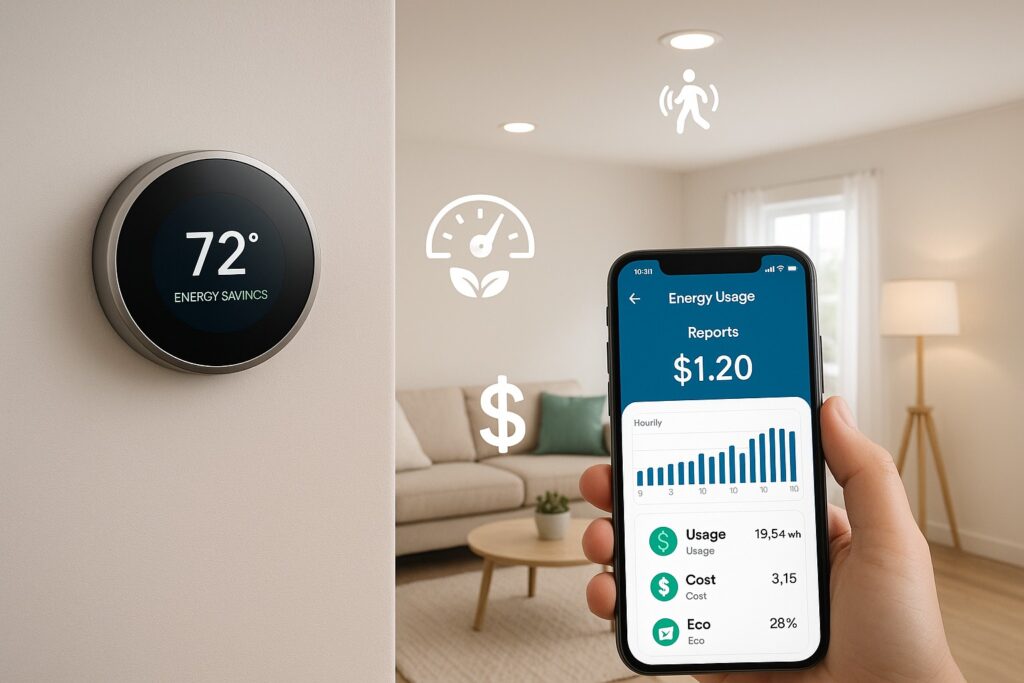
Smart Thermostats
Let’s start with smart thermostats like Nest or Ecobee. These devices don’t just adjust temperature—they learn your daily habits and automatically optimize heating and cooling to reduce energy usage. Heading out for the day? Your smart thermostat knows and adjusts accordingly. Coming home earlier than expected? You can adjust it remotely with your phone.
Smart Lighting Systems, Smart Plugs, and Power Strips
Lighting is another big energy sink—but with smart lighting systems, you can set timers, use motion sensors, or even dim lights when natural sunlight is available. That means no more forgetting to turn off lights in empty rooms.
Add in smart plugs and power strips, and now you can schedule when your coffee maker or entertainment system turns off completely—cutting back on phantom energy drain.
Some smart home systems even offer energy monitoring, showing you which devices are using the most power, so you can make smarter choices moving forward.
Over time, these small adjustments can lead to significant cost savings—not just in lower electricity bills, but also by extending the life of your appliances through better usage habits.
3. Convenience and Comfort
At the heart of smart home automation lies one of its most appealing features: everyday convenience and comfort. Imagine controlling lights, appliances, and even your thermostat without ever lifting a finger—or having your home anticipate your needs before you say a word.
Picture this: it’s 7 a.m., your blinds open gently, soft lighting fades on, and your favorite playlist starts in the background. You didn’t lift a finger—that’s the beauty of smart home convenience.
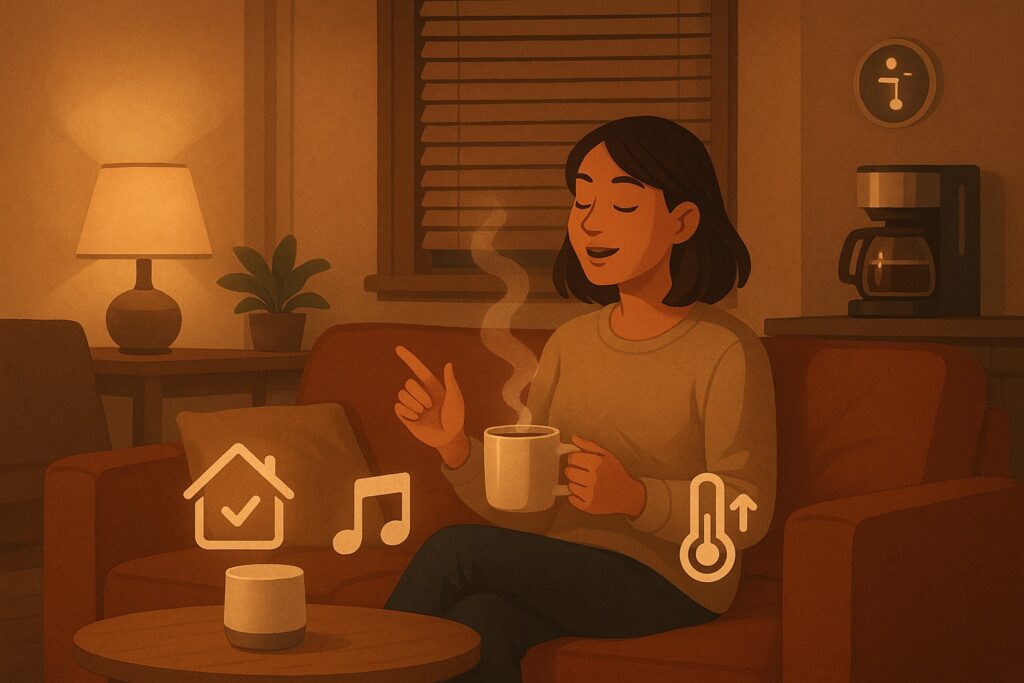
Voice assistants, routines, and personalization
Home automation allows you to build daily routines that match your lifestyle. Whether it’s a “morning routine” that brews your coffee and turns on the news, or a “bedtime scene” that dims the lights and locks the doors, automation brings true hands-free comfort to your space.
Voice assistants like Alexa, Google Home, or Siri let you control almost anything with simple voice commands. Just say, “Turn off the lights,” or “Set the thermostat to 72,” and your home responds instantly.
What’s more, these systems are customizable. You can create settings tailored to your preferences—from light levels to music choices—so your environment always feels just right. That kind of personalization adds a level of comfort you didn’t know you were missing.
Whether you’re multitasking, managing a family, or simply want life to be a little easier, a voice-controlled smart home helps eliminate small frustrations and gives you back precious time.
4. Remote Access and Control
One of the most powerful benefits of smart home automation is the ability to remotely control your devices—anytime, from anywhere. Whether you’re at work, on vacation, or just lounging in bed, your entire home is literally at your fingertips.
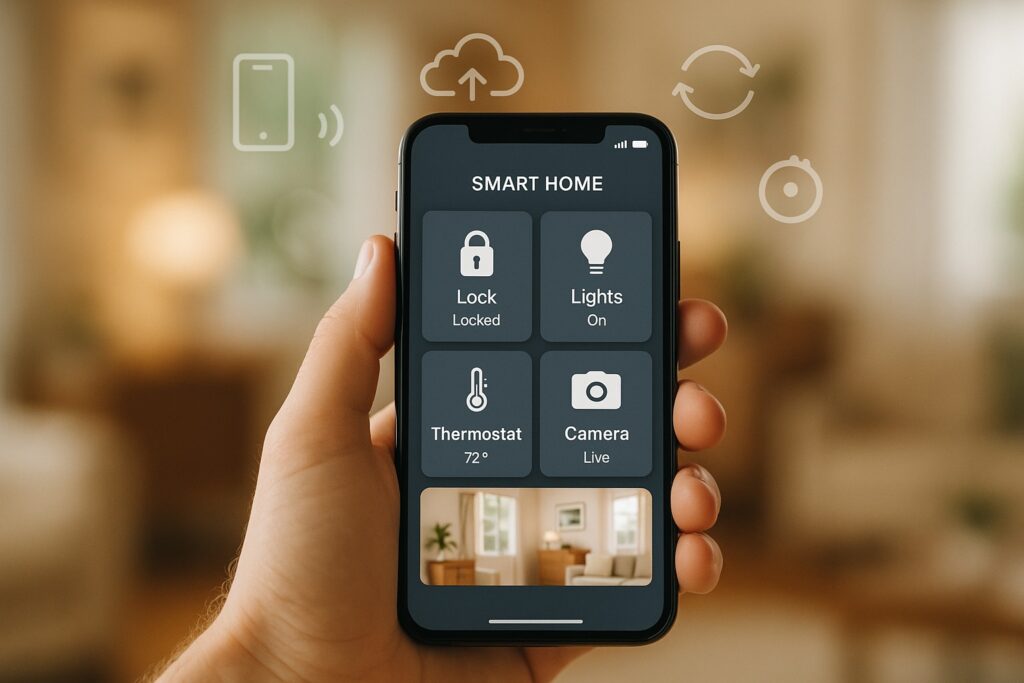
Control devices from anywhere
Ever left home and couldn’t remember if you locked the door or turned off the lights? With smart home remote access, you don’t need to stress. Just open your smart home app, and in a few taps, you can lock your doors, switch off lights, or even view your security camera feed—all from your phone.
Remote control smart devices give you incredible freedom and peace of mind. You can adjust your thermostat before you get home, check if your oven is off, or even let a guest in with a smart lock, without being anywhere near the house.
This kind of remote smart home management is especially useful for busy families, frequent travelers, or anyone who wants to monitor their home while away. Forgot to feed your pet? Some smart feeders can be triggered from your app. Expecting a package? Check your smart doorbell camera from your phone and talk to the delivery person in real-time.
Whether it’s a security issue or just day-to-day efficiency, being able to access your home remotely puts you in full control—even when you’re miles away.
5. Enhanced Accessibility for Seniors and Disabled
Smart home automation isn’t just about luxury—it’s also a powerful tool for independent living. For seniors and individuals with disabilities, smart technology can make daily life safer, easier, and more dignified.
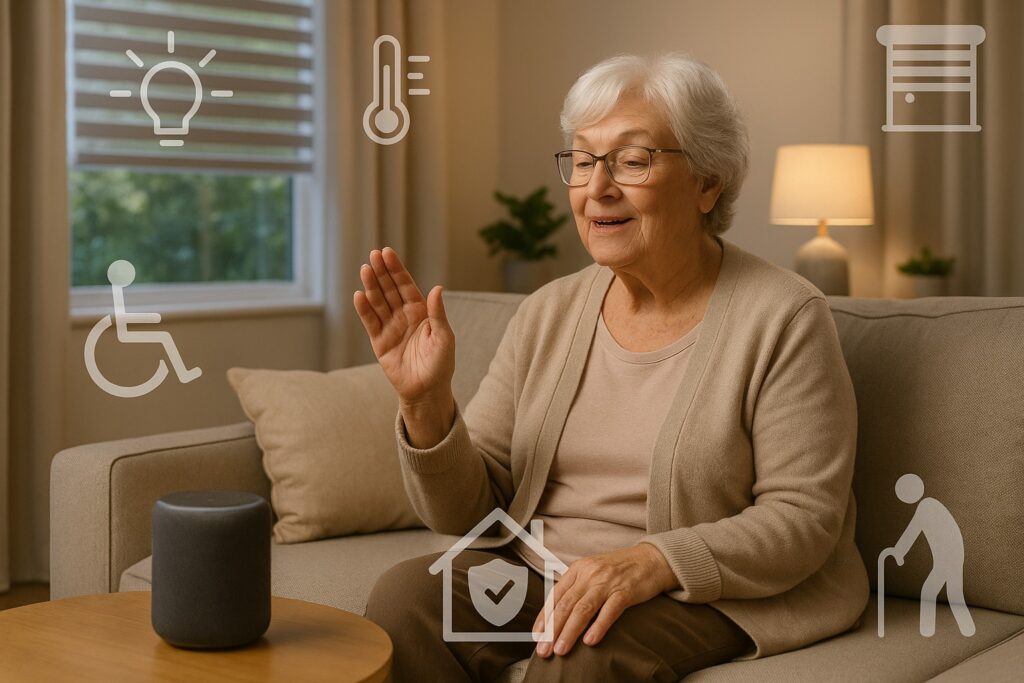
Automation, commands, and detection
For many older adults and people with physical challenges, simple tasks like turning on lights, adjusting the thermostat, or answering the door can be difficult—or even dangerous. That’s where smart home automation for accessibility steps in.
With voice-activated controls through devices like Alexa or Google Assistant, there’s no need to fumble with switches or remotes. Saying “Turn on the lights” or “Call my daughter” becomes a way to stay independent and safe at home.
Features like automated lighting, motion sensors, and smart doorbells also help prevent accidents. For example, lights can turn on automatically when someone enters a room, reducing the risk of falls. Or, a smart camera system can show who’s at the door without needing to physically go check.
For individuals with limited mobility, assistive smart technology—like smart blinds, automatic door openers, or bedside voice control hubs—can provide a level of comfort and control that’s truly life-changing.
These innovations support aging in place, helping seniors stay in their homes longer, with less reliance on caregivers. And for families, they offer peace of mind knowing their loved ones are safe and connected.
6. Improved Appliance Functionality and Maintenance
Modern smart home automation doesn’t just make your appliances more convenient—it makes them smarter, more efficient, and easier to maintain. Whether it’s a fridge that tells you what you’re low on or a washer that alerts you when your cycle is done, connected appliances are changing the way we interact with everyday household devices.

Maintenance alerts and usage tracking for home appliances
If you’ve ever run the dishwasher twice because you forgot it was already running, or found spoiled food in the fridge because the temperature wasn’t right, you’ll appreciate what smart appliances bring to the table.
With connected kitchen devices like smart refrigerators, you can get real-time updates on food inventory, temperature issues, or if the door has been left open too long. Some models even let you peek inside remotely while grocery shopping—no more guessing if you’re out of eggs.
Smart washing machines and dryers can send maintenance alerts when filters need cleaning or if a load is finished. No more walking to the laundry room only to realize the cycle still has 20 minutes left. Plus, you can start or pause cycles from your phone, perfect for busy days.
What makes these appliances even more helpful is their ability to monitor usage trends, suggest more energy-efficient settings, and sometimes even diagnose minor issues before they become expensive repairs.
By integrating them into your smart home ecosystem, you’re not just making chores easier—you’re improving performance, extending lifespan, and staying ahead of maintenance needs.
7. Customization and Personalization
One of the most enjoyable aspects of smart home automation is the ability to tailor your space to your lifestyle. From custom lighting scenes to automated routines that match your schedule, smart homes give you the freedom to shape your environment just the way you like it.
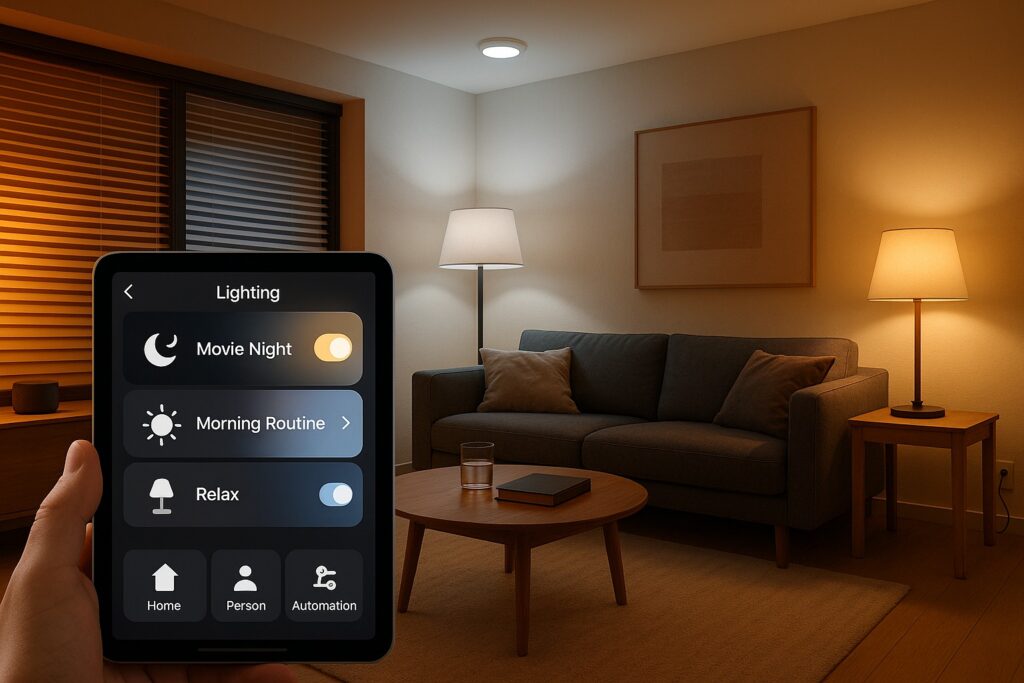
Learning user habits with AI
Your home should feel like your home—and with smart home customization, it absolutely can. Whether you’re winding down for the evening or setting the tone for a dinner party, you can create automated scenes that match the moment perfectly.
Want your living room to dim the lights, close the blinds, and start a cozy playlist when you say “movie night”? That’s easy with a few taps or voice commands. Prefer waking up gradually with a sunrise-style lighting routine and your coffee machine ready to go? Done.
These personalized smart routines aren’t just about convenience—they create a more emotionally satisfying experience. You can adjust temperature settings, light warmth, music preferences, or even your morning news feed—all triggered by time, presence, or voice.
Over time, many smart home systems learn your behavior and adjust accordingly. That means your home evolves with your preferences, making it smarter and more aligned with your needs every day.
It’s more than just tech—it’s about making your space truly yours.
8. Eco-Friendly Living
One of the lesser-talked-about—but hugely important—benefits of smart home automation is its ability to support a more eco-friendly lifestyle. By reducing unnecessary energy use and optimizing everyday habits, smart homes play a key role in helping us live greener.

Sustainable home automation with green living technology
Going green doesn’t have to mean big sacrifices or complicated changes. With the right smart home technology, living sustainably becomes almost effortless.
Devices like smart thermostats, automated lighting, and energy-monitoring systems help reduce waste by making sure you’re only using what you need—when you need it. For example, lights turn off automatically in empty rooms, and the heating or cooling system adjusts based on the time of day or whether you’re home.
This level of smart energy management not only helps lower your monthly utility bills but also makes a real difference in reducing your carbon footprint. Every bit of energy you save adds up to a greener planet.
Even small changes, like using smart plugs to cut off standby power or scheduling appliances to run during off-peak hours, can help you live a more environmentally conscious life without much thought or effort.
And the best part? You can track your usage and see the positive impact you’re making, right from your phone.
So if you’re looking for a way to align comfort, convenience, and sustainability, a smart eco-friendly home is a great place to start.
9. Home Value and Resale Appeal
Investing in smart home automation doesn’t just make your life easier—it can also make your home more attractive to buyers and increase its overall market value. Today’s homebuyers are looking for modern, connected spaces, and a smart home delivers exactly that.
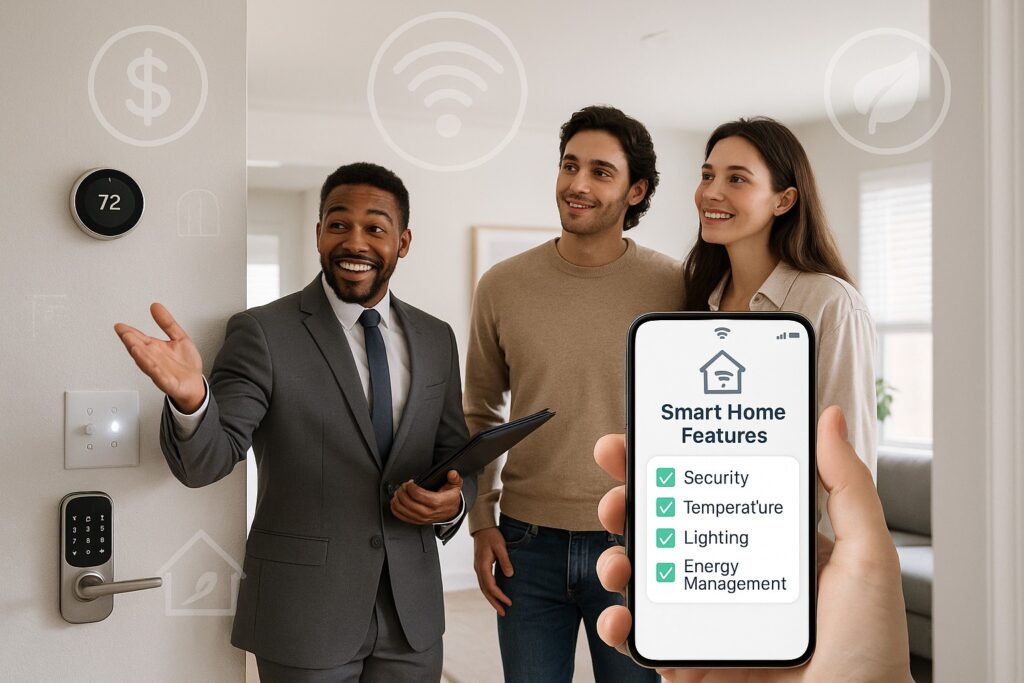
ROI on smart home investment
If you’re planning to sell your home down the line, upgrading to a smart home could be one of the smartest investments you make. Features like smart thermostats, security systems, and automated lighting aren’t just conveniences—they’re selling points that can set your home apart in a competitive real estate market.
Modern buyers—especially millennials and Gen Z homeowners—are actively searching for homes with built-in smart technology. They’re looking for move-in ready properties that offer energy efficiency, remote control features, and added peace of mind.
According to real estate data, homes equipped with smart devices often sell faster and sometimes at a premium. That’s because buyers view these upgrades as both cost-saving and future-proof. It’s not just a home anymore—it’s a tech-enabled lifestyle.
So whether you’re thinking short-term resale or long-term investment, adding smart home features can significantly boost your property’s value and broaden its appeal.
10. Integration and Scalability
One of the best things about smart home automation is that you don’t have to do everything at once. With modern systems, you can start small and scale up over time—thanks to seamless integration and modular scalability.
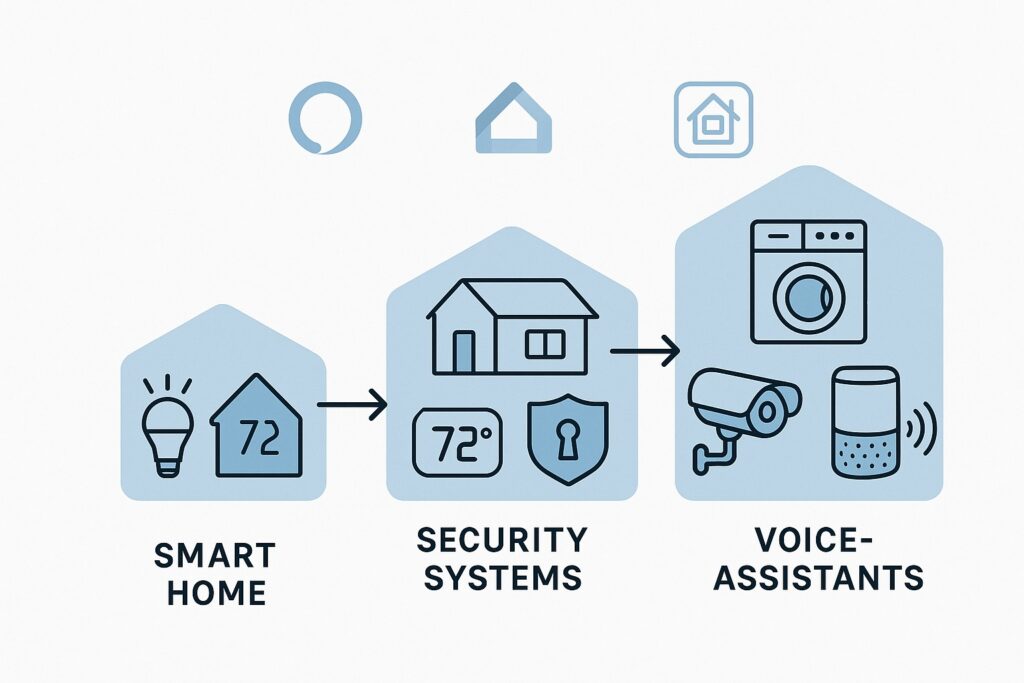
Modular systems, compatible platforms, and ecosystems
Starting a smart home journey can feel overwhelming—but it doesn’t have to be. You can begin with a few key devices, like a smart thermostat or lights, and expand your setup as your needs or budget grow. That’s the power of scalable home automation.
Today’s smart devices are designed with integration in mind. Whether you’re using Alexa, Google Assistant, or Apple HomeKit, most smart home ecosystems are modular and compatible, allowing you to add new devices over time without starting from scratch.
Want to start with smart lighting and then add a security system later? Or maybe integrate smart blinds, appliances, or garden irrigation down the road? No problem. These systems are built to grow with you, making them ideal for renters, homeowners, and even businesses.
This kind of future-proof automation ensures that your home can evolve as technology advances—without needing a full overhaul.
So whether you’re just getting started or looking to build a fully connected living space, a scalable smart home offers the flexibility and longevity to make it truly yours.
Are There Any Downsides to Consider?
While smart home automation offers amazing benefits, it’s important to also understand the potential challenges before diving in. Like any technology, it comes with trade-offs that may affect your comfort level, budget, or tech readiness.

Honest review about smart homes
Let’s be honest—smart homes aren’t perfect. While they bring convenience, savings, and peace of mind, there are a few downsides to consider before fully automating your living space.
First, there’s the initial cost. High-quality smart devices like thermostats, cameras, or integrated lighting systems can be pricey. And if you’re aiming for a full-home setup, the investment adds up quickly.
Another concern is privacy and data security. Because many smart systems rely on internet connections and cloud storage, there’s always a chance of data breaches, unauthorized access, or information leaks. It’s important to choose reputable brands and follow best practices like using strong passwords and enabling two-factor authentication.
There’s also a bit of a learning curve. If you’re not particularly tech-savvy, managing different apps, automations, and devices might feel overwhelming at first. And with so many options on the market, compatibility issues can sometimes arise—especially if devices don’t play well across platforms like Alexa, Google Home, or Apple HomeKit.
Finally, dependence on technology can become a factor. If your Wi-Fi goes down or a device malfunctions, your once-smooth setup could suddenly feel like a hassle.
That said, most of these issues have workarounds or are improving rapidly with tech evolution. The key is to start simple, do your research, and expand your system gradually.
Final Thoughts: Is Smart Home Automation Worth It?
With all its features—from added security to energy savings, to pure everyday convenience—it’s clear that smart home automation is more than just a passing trend. For many households, it’s becoming an essential part of modern living.
So—is smart home automation worth it? For most people, the answer is a solid yes. Whether you want to save energy, boost your home’s security, or just simplify your daily routines, a smart home offers a flexible, future-ready solution that fits your lifestyle.
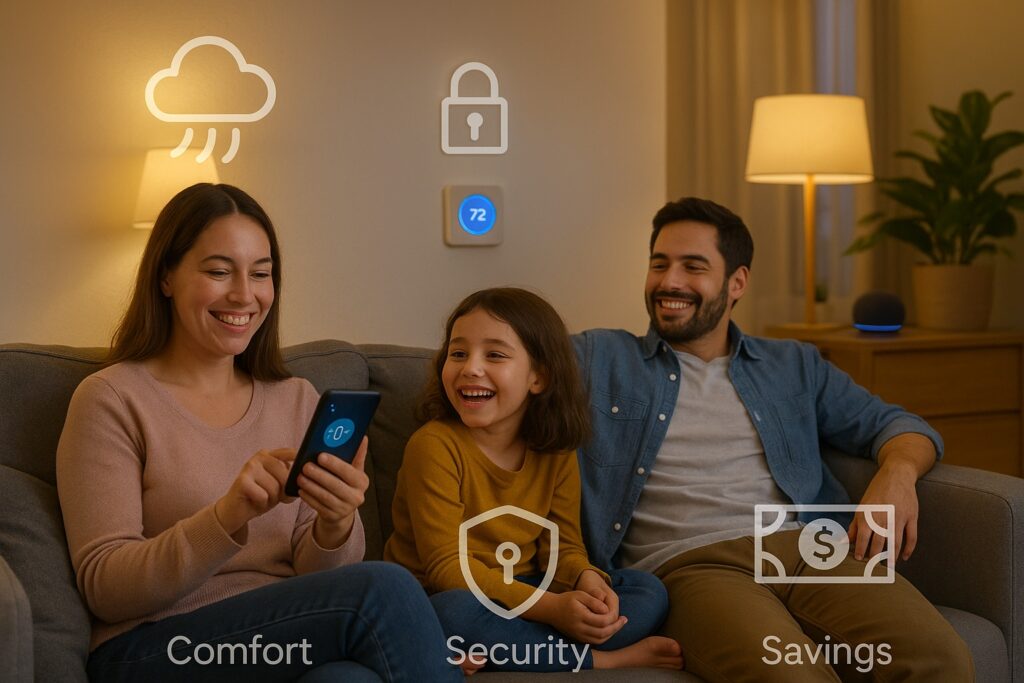
Sure, there are a few hurdles to consider—like setup costs and privacy concerns—but the overall value of home automation is hard to ignore. It empowers you to take control of your environment in ways that are efficient, responsive, and even enjoyable.
If you’re still unsure, start small. Try a smart plug or a voice assistant. Experience the smart lifestyle one feature at a time—and expand when you’re ready. The great thing is, smart home systems are built to grow with you.
In the end, whether you’re tech-savvy or brand new to it all, smart home automation can make your home feel more comfortable, more secure, and more “you.”
You will also like:
- “Smart Home Devices for Beginners”
- “Smart Home Security Systems Compared”
- “Zigbee vs Z-Wave: Which One Is Better for Your Smart Home?”

